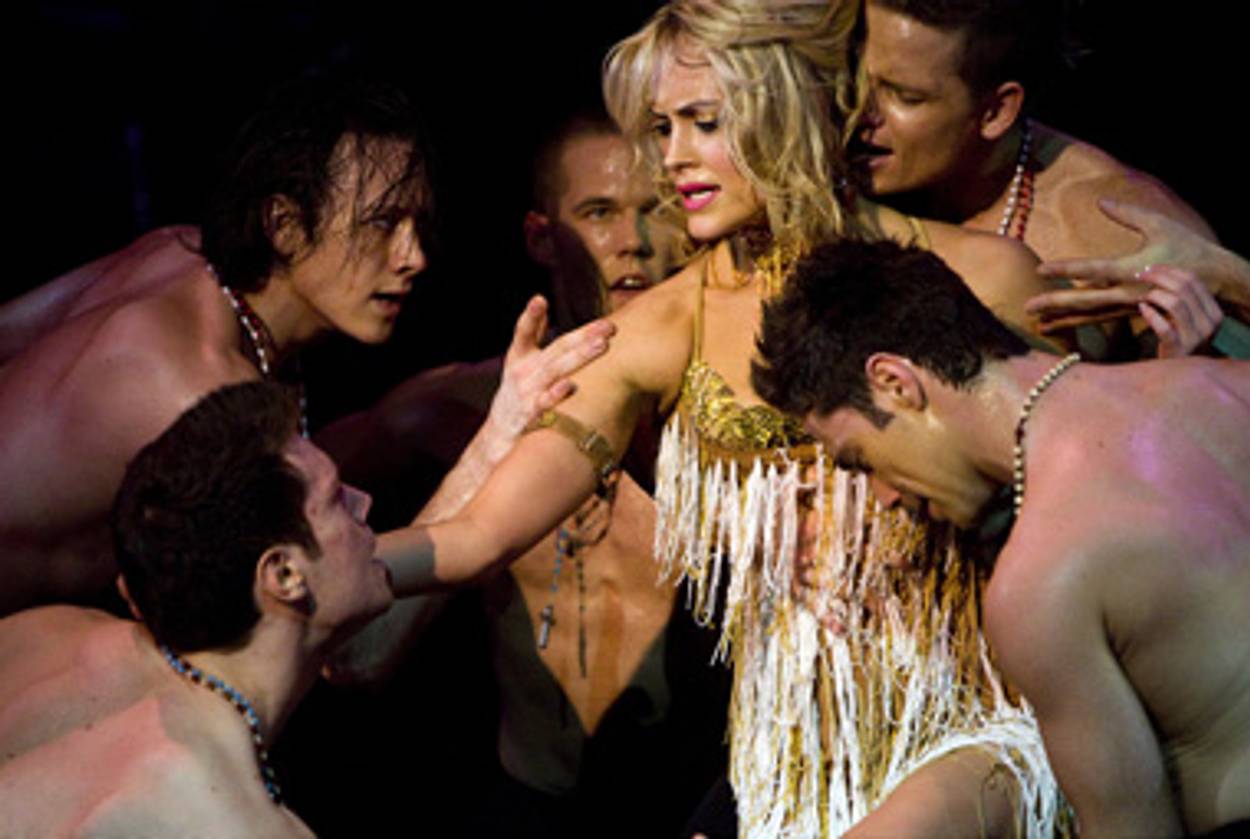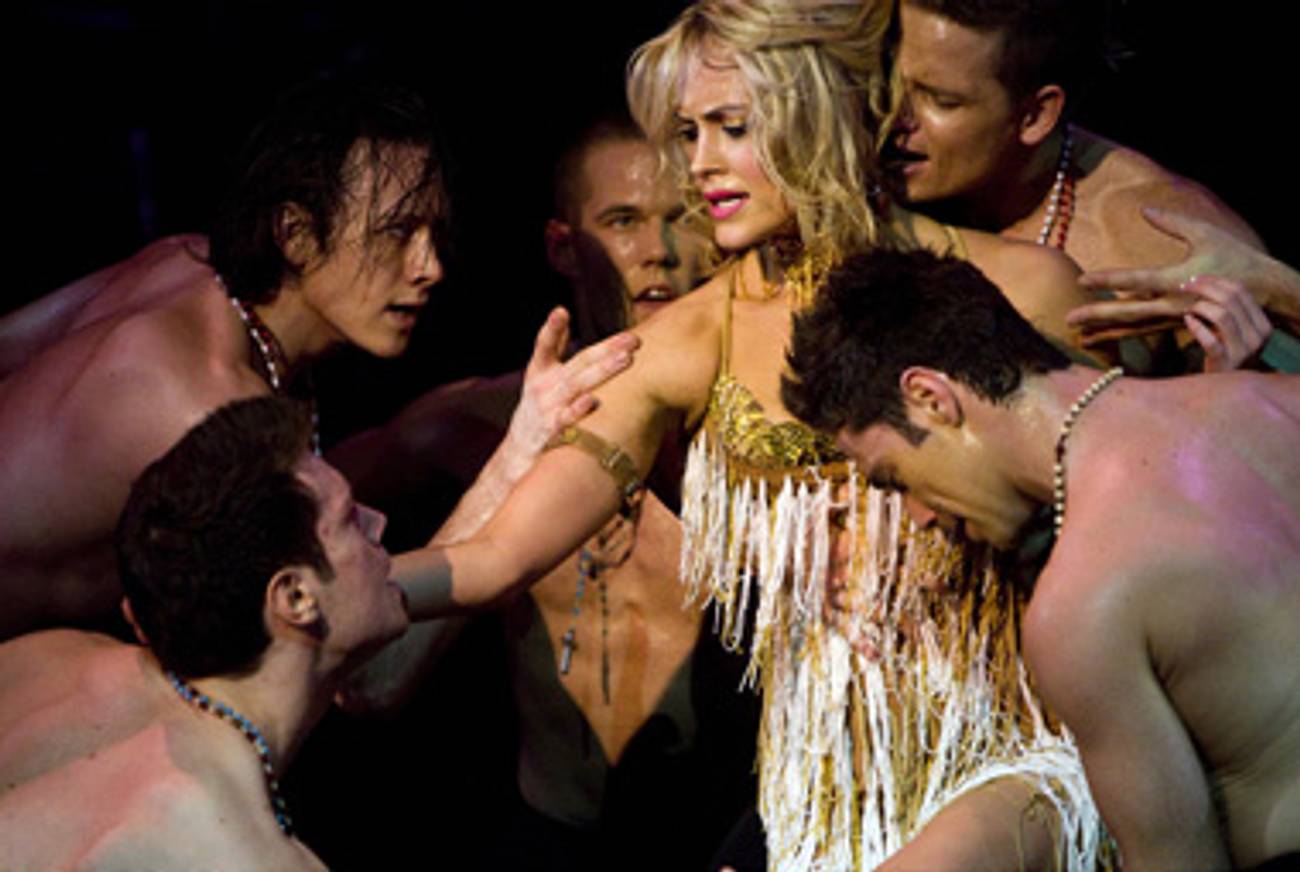Dancing with the Czars
How Russian-Jewish émigrés are changing the face of competitive ballroom dance




Competitive ballroom dance, the high-testosterone, low-art pastime fittingly referred to as “dancesport” by enthusiasts and regulated by a global body recognized by the International Olympic Committee, is pursued and followed in much of the world—generally, the parts with discotheques and good soccer teams. It remains relatively obscure in the United States, but that’s begun to change in the past few years thanks to dance-competition television shows like Dancing with the Stars and So You Think You Can Dance. For the past several months, the bespangled cast of a live show from Australia called Burn the Floor has even been foxtrotting across a Broadway stage.
Given the international nature of dancesport, it should come as no surprise that the 20 hoofers in Burn the Floor come from nine different countries, from Sweden to the Philippines. What might be somewhat less intuitive is that three of the dancers—all young men—are the children of Jewish émigrés from the Soviet Union. But in fact, this may be less an anomaly than an illustration of a larger trend. As The New York Times reported in 2003, the nascent popularity of ballroom dance in the United States is largely due to an influx of professionally trained dancers from the former USSR who run and attend a significant percentage of the ballroom dance studios here in America. Carrying over a practice from the old country, many Russian-born parents send their children to ballroom dance classes from a young age. This, the Times noted, is especially true among Soviet Jews, for whom ballroom dance was, back in Russia, a common strategy of acquiring “culturedness.”
The three Russian-speaking Jewish dancers in Burn the Floor are part of this younger generation, and their having reached Broadway suggests the extent of their cross-cultural success, even if it’s not quite what their parents bargained for. Sasha Farber, 26, and Henry Byalikov, 24, are traveling with the show back to Australia, where they grew up, next month; the tour will continue through Japan and Korea and then back to United States later this year. Maksim Chmerkovskiy, 29, receives special billing in Burn the Floor as a guest star—he’s a five-year veteran of Dancing with the Stars who’s taught Denise Richards and the Spice Girls’ Mel B to samba. (He’s enough of a celebrity that US Weekly breathlessly followed his engagement to and breakup with the half-Jewish Ukrainian dance champion Karina Smirnoff.) His final performance with Burn the Floor was last night.
It’s clear from talking to the three cast members that they have a bond: brought together to talk about their common heritage, the three non-observant Jews spent the interview calling each other “rabbi” and laughing hysterically, when not breaking out into side conversations in Russian. It’s also clear that Chmerkovskiy, who grew up in Odessa, is the most intense member of the group. Asked whether he has a favorite dance, he scoffed, “Do you have children? Do you have a favorite child?”
Chmerkovskiy’s parents began sending him to a kind of finishing school “where they teach you how to eat with a knife and fork and open the door for girls and shit like that,” he said, before he reached kindergarten age. “We weren’t upper class, but we were pretending to be,” he said bluntly. “And part of training to be a little prince or princess is ballroom dancing class. [The rest of] it totally didn’t work, but dancing stuck.” His parents pushed him hard in dance, and at 16, a year after the family moved to Brooklyn, he opened his own dance studio with his father’s help. (He now owns three.) During those same years, he briefly attended Sinai Academy, an Orthodox yeshiva; though not religious, his parents deemed it a superior alternative to the neighborhood public school. The experiment failed when he found himself unable to explain his extracurricular passion to his teachers there. “I couldn’t really educate a 60-year-old rabbi in the art of ballroom dancing with a half-naked girl,” he said.
Farber, meanwhile, was born in Belarus in a town not far from Chernobyl. He remembers his family piling into the car and driving as far away as possible on the day of the nuclear disaster in 1986. After that, they immigrated to Australia. In the heavily Eastern European eastern suburbs of Sydney, he began studying ballroom dance under the supervision of another Russian immigrant, Marta Kan, whose studio has produced a number of competitive dance champions and was featured in an Australian TV documentary called Ballroom Babies in 2006. Byalikov, whose parents had come from Russia by way of Israel, attended the same studio.
“It was very much a Russian learning environment,” Byalikov said, “where if you stepped out of line you got screamed at, so you’d quickly step into line.” Kan and teachers like her represent a crucial link in the transmission of Russian culture—in their case, embodied by a famously rigorous approach to dance training—to a generation growing up in the Soviet diaspora. Trained in ballet in Odessa, Kan (who is not Jewish) moved to Australia with her husband (who is) in 1993. Most of her students, she said in a telephone interview, are Russian, Jewish, or both.
The extent to which Farber, Byalikov, and Chmerkovskiy have metabolized the mores of their dance training becomes clear when they each express ambivalence about their current gig: not because it’s too intense, but because maybe it’s not intense enough.
“The atmosphere we grew up in brainwashed us into being a different type of human, where we actually like being bitched at by coaches and judges and other couples,” Chmerkovskiy said. “We get motivated by people telling us we can’t.”
Kan said she’s proud of her former students, even though they’ve been taken out of the competitive dance world for now. “Sasha and Henry chose a different type of dancing, and now the whole world knows about them,” she said. “Maybe their parents are not very happy, they’re too far away, they want them to have girlfriends, babies. You know Jewish families.
“But I understand them.”
Marissa Brostoff, a doctoral student in English at the CUNY Graduate Center, is a former staff writer at Tablet and the Forward.
Ari M. Brostoff is Culture Editor at Jewish Currents.